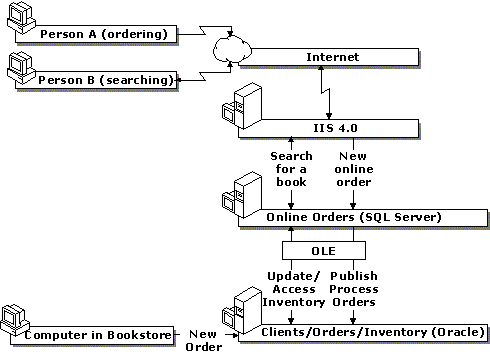
In this scenario, a company uses both Oracle and SQL Server. The company purchased Oracle in a package. SQL Server was implemented to solve a divisional computing need. In this scenario, the divisional system has grown in size and complexity and houses important data useful to both the division and the enterprise. The Oracle system can be modified to provide enterprise data for the growing departmental needs, or the departmental systems data can be migrated to a central data store. Either option is a large undertaking that might result in little if any increased functionality.

Another approach is for the two systems to share data in a peer-to-peer relationship. For example, consider the case of a training company whose contact management, classes, students, and orders are stored in a SQL Server 7.0 database, and its financial data is stored in an Oracle database. When a new order is created in SQL Server, an invoice must be produced from the Oracle database.
By using Microsoft Transaction Server (MTS), part of Windows NT Server, the appropriate entries are created in the Oracle database. And, if an order is canceled, an MTS transaction can update both the SQL Server and the Oracle databases.
A middle tier must be created to define the business rules and procedures, and care must be taken that all clients use it to perform business functions.
This peer approach leaves existing data in place, does not disrupt existing systems, and allows developers to focus efforts on enhancing functionality rather than reorganizing data.